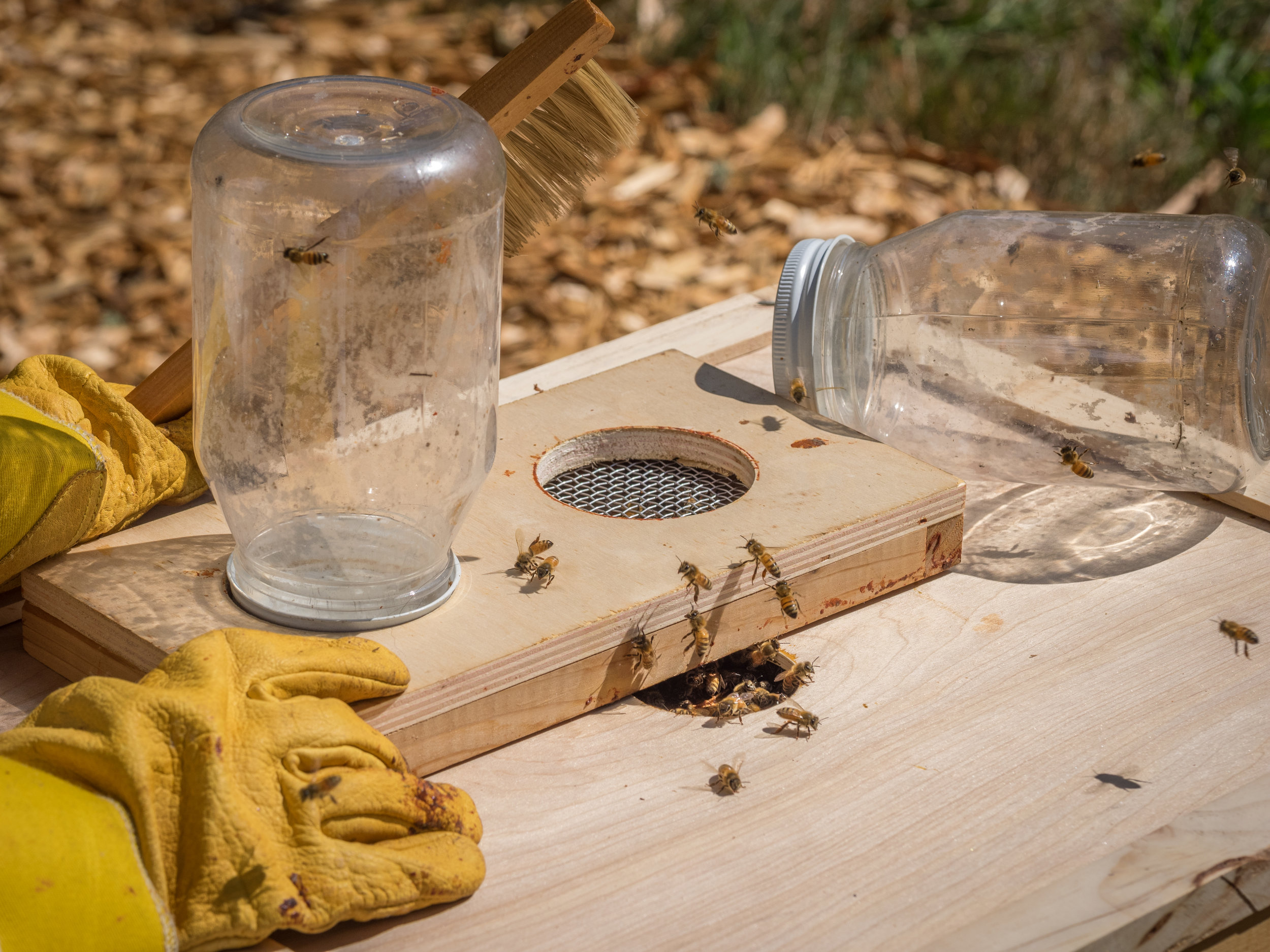It sometimes becomes necessary to support your bees with sugar syrup, especially early in the season when new colonies are being established or weather patterns are preventing colonies from foraging. Feeding is not without its downsides (robbing, drowning, humidity, lack of nutrients to name a few), but it can be an important tool if you have solid reasons for doing it!
Reasons for Spring Feeding
Establishing new colonies
Honey bees need a lot of fuel in early spring for comb construction and population build-up, and packaged bees are starting out with nothing. It is crucial to feed packages upon installation, but not quite as important for nucs and swarms unless the weather is limiting foraging activity.
Supporting weak colonies
If your bees go into winter with low stores, it’s important to ensure they have emergency winter feed installed (in the form of dry sugar) and to begin supplementing them with syrup once the weather warms up. The period between mid-February - late April is a precarious time when many colonies starve because they run out of stores and forage is scarce.
Abnormal weather
If the weather patterns are preventing your bees from foraging after the winter, even strong colonies can starve! Keep a close eye on early spring food stores and the weather, and feed if necessary.
You can get an idea of your colonies’ food stores at the end of winter by hefting (lifting without opening) the hives. If they’re heavy, they likely still have honey available. If they feel light and easy to lift, they may need supplemental feed until flowers start blooming. When temperatures are consistently above 50 degrees, you can pop the lid and check things out. If they have honey available and conditions are good for foraging (sun, warm, blooms), there is no need to feed!
What to Feed
Extra honey frames from super strong colonies. Stealing from the rich, feeding to the poor…
Crystallized or moldy honeycomb. It won’t bother the bees & we can’t eat it!
Sugar syrup. This should be cane or beet sugar, and never raw (the solids will make them sick). Organic sugar is costly but will limit pesticide introduction.
In the spring, feed a 1:1 sugar to water syrup. This will encourage them to eat it directly rather than store it, which is what we want!
We like to use double jar feeders like the one pictured above, because it sits inside of our hives (to prevent robbing), prevents drowning, doesn’t make a mess and the jar size can be scaled up or down depending on how much you need to feed! Do some research on different feeding styles - there are so many different ways to do it, and they each have their pros and cons.
———
If you are just getting started in beekeeping (or hoping to soon!), check out our online Beekeeping for Beginners course here! Our comprehensive beginning course is designed to equip you with everything you need to get started in beekeeping from the comfort of your own home.
